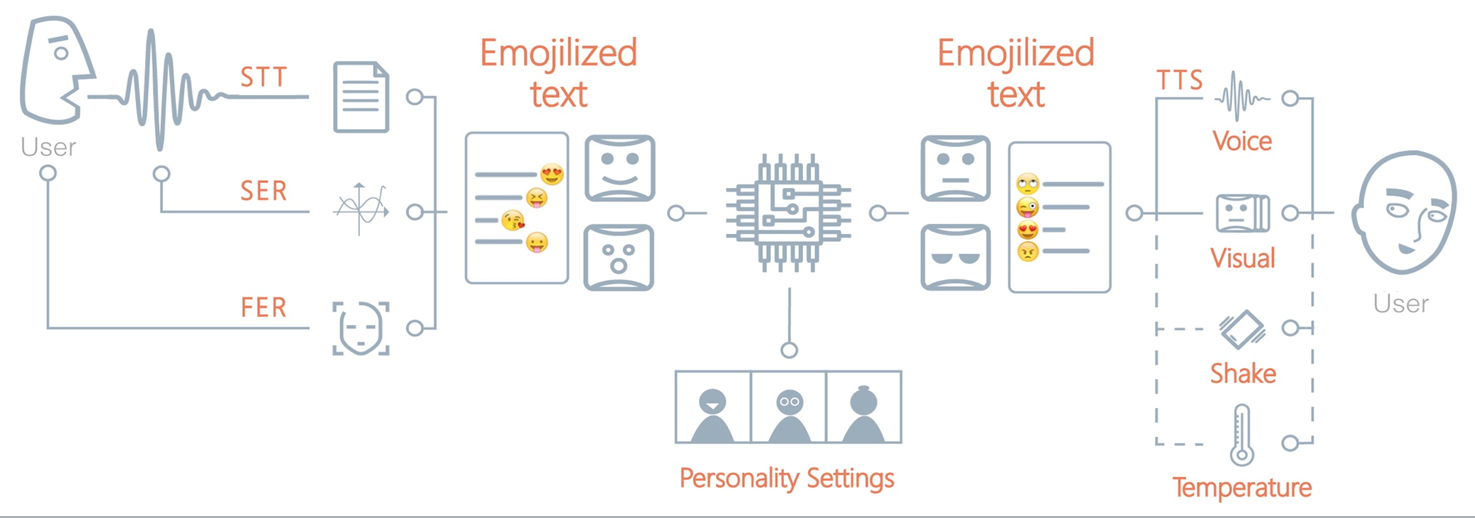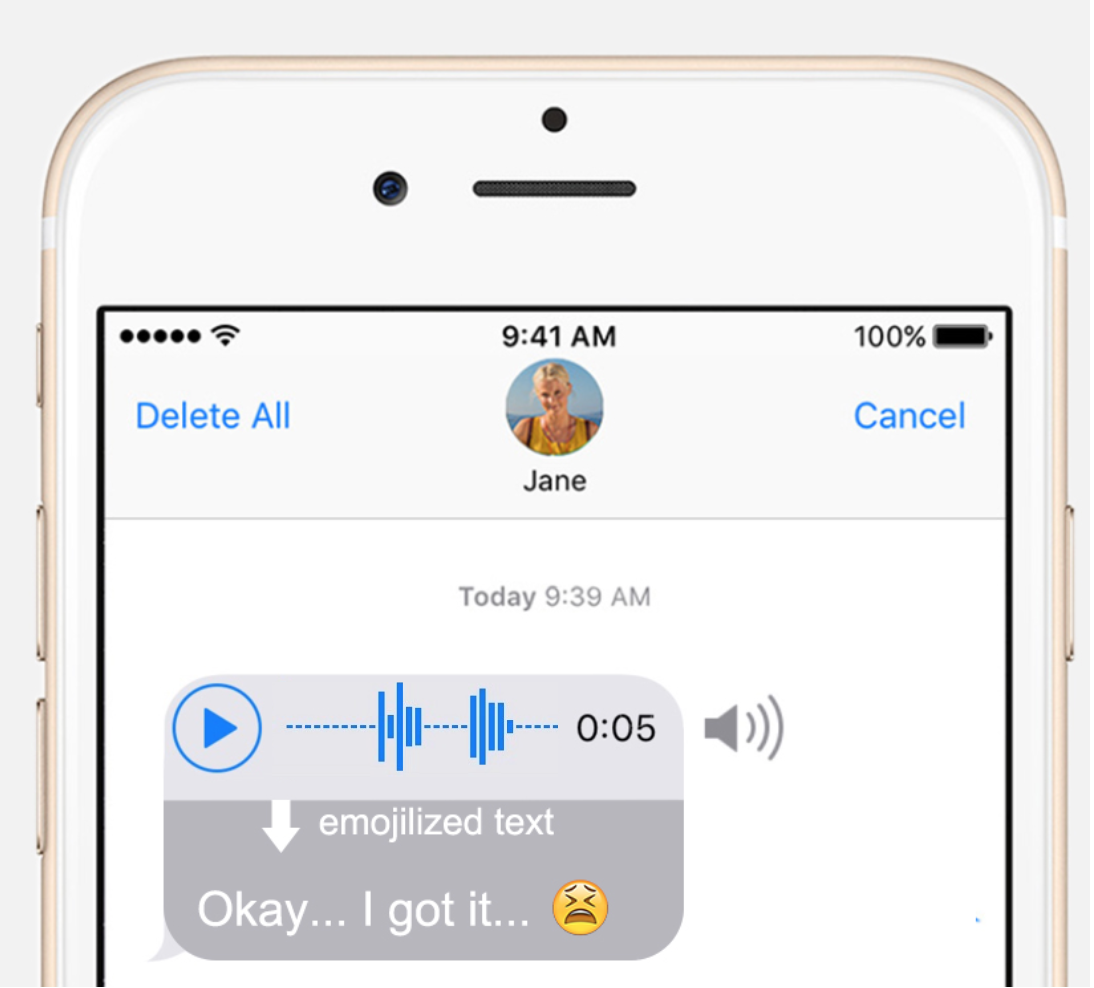Enabling affective information in Human and Computer Interaction endows the machine with abilities of understanding and responding to human emotions. Many user behaviors indicate subtle affective information which can be detected by affective computing techniques such as Facial Emotion Recognition and Speech Emotion Recognition. The affective information can be used to optimize existing services, e.g. more accurate content recommendation. Moreover, the scope of services can also be extended to satisfy the emotional need of the user, e.g. anxiety relief.
Emojilization: An Automated Method For Speech to Emoji-Labeled Text
Emojilization is a system that fuses semantic and acoustic features in speech signals to recognize emotions. The recognition results are annotated in the text of speech recognition in the form of emoji icons.
Details can be viewed in paper: Hu, J., et al. (2019). Emojilization: An Automated Method For Speech to Emoji-Labeled Text. Extended Abstracts of the 2019 CHI Conference on Human Factors in Computing Systems, ACM. https://doi.org/10.1145/3290607.3313071



Heard yoUr Emotion - Speech Emotion Feedback System
HUE speech emotion feedback system can dynamically adjust the dialogue content based on the results of speech emotion recognition. Specifically, HUE adds tone words to the responses to create empathy and adjusts the semantic content of the responses according to the laws of human emotion management.
More detials in the paper:胡佳雄, 徐迎庆. 情感语音聊天机器人"护甲熊"[J]. 装饰, 2019, No.314(06):26-27.

Demo of emotional speech robot